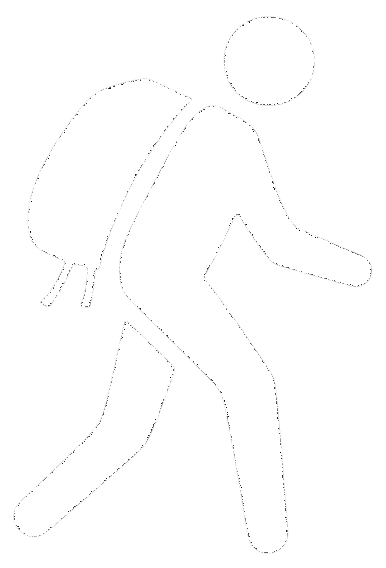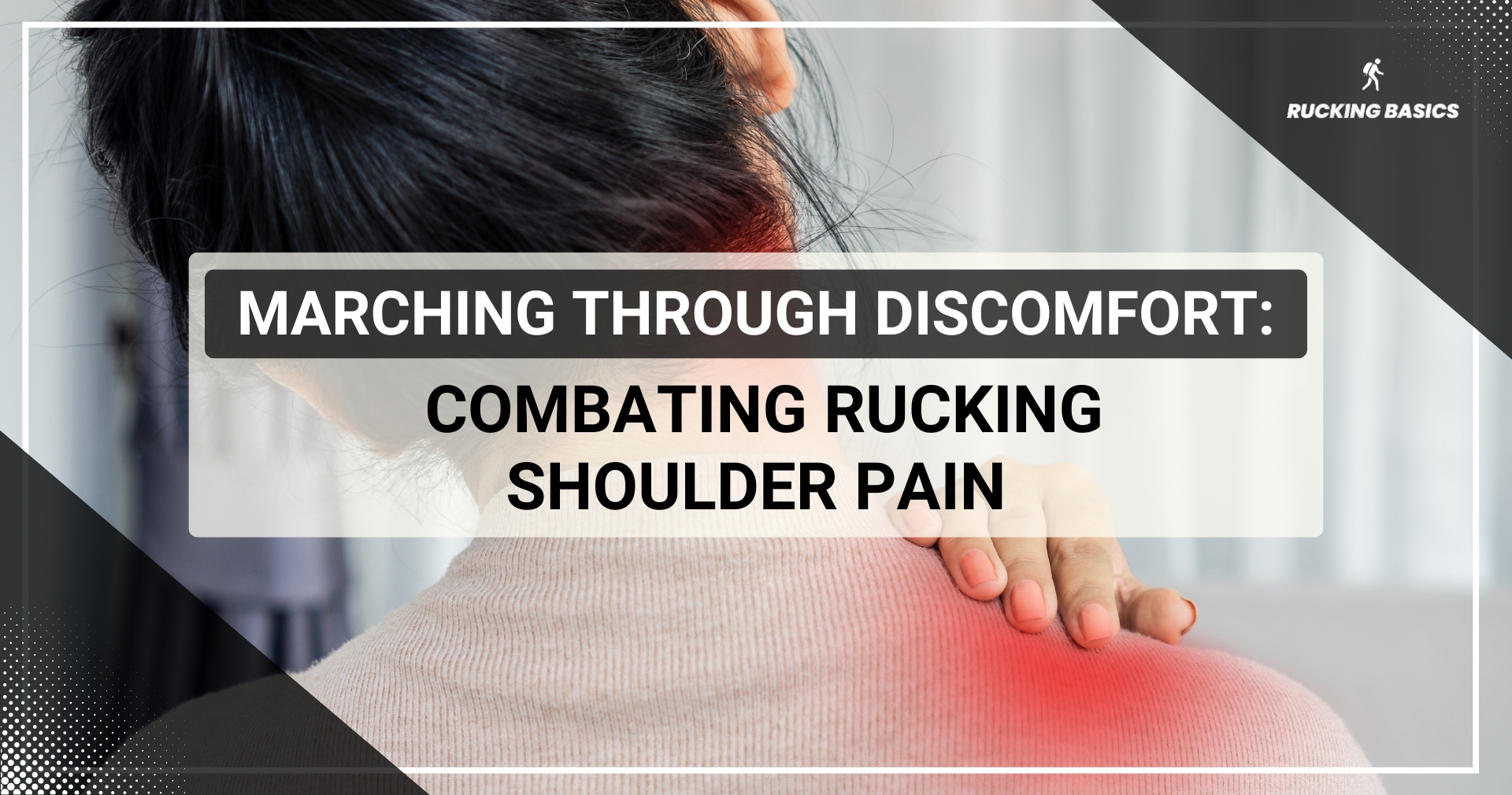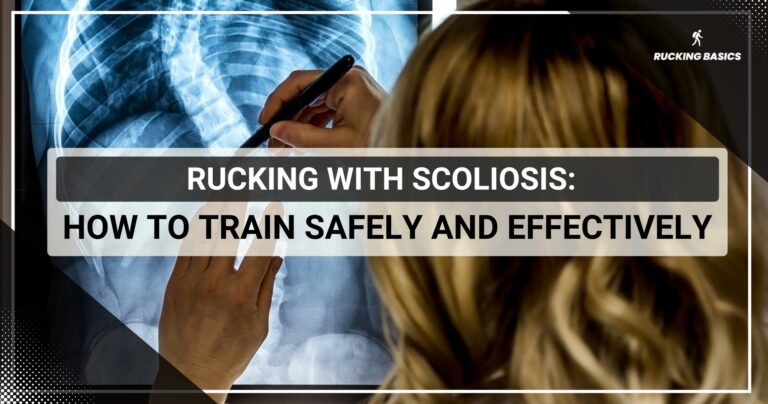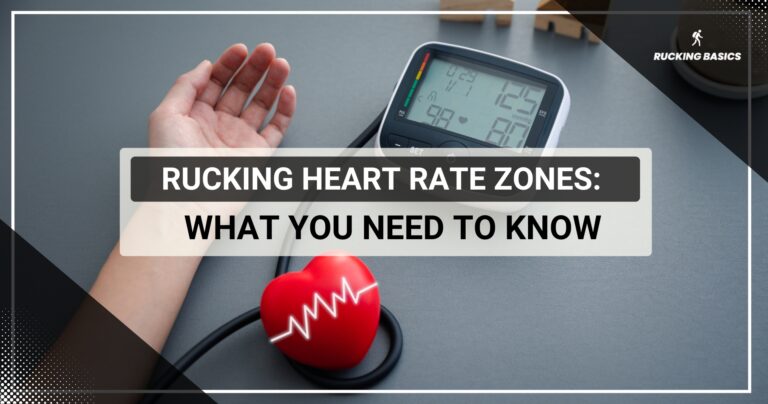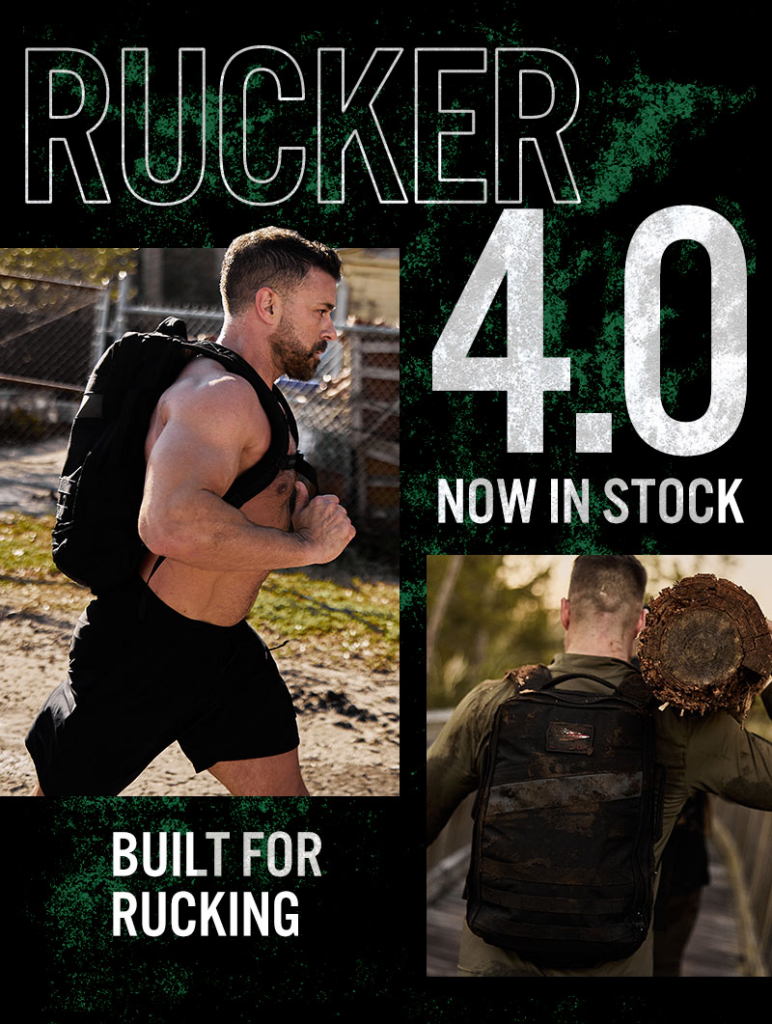Injuries are an inevitable part of any physical activity, and rucking is no exception. Every injury is painful, limiting, and challenging in its own way, but one of the most annoying is rucking shoulder pain.
I felt that burning, sharp sensation in my shoulder more than once during tennis and rucking. As much as I tried to shake off that feeling, I usually had to take a break.
Over time, both through personal experience and my work as a personal trainer, I have learned a lot about shoulder pain, which does not always necessarily indicate serious injury. That’s why I want to delve deep into the causes of shoulder pain during rucking and explore effective strategies to overcome it.
Understanding Shoulder Pain in Rucking
Don’t worry, this won’t be a boring anatomy lesson, but before we can tackle shoulder pain from rucking, it’s essential to understand at least the basics of very complex shoulder anatomy. The shoulder is a structure comprising muscles, tendons, ligaments, and joints, all working together. Deltoids are the main muscles, and the part most often injured is the rotator cuff. The rotator cuff consists of the muscles and tendons surrounding the shoulder joint and keeping the humerus (upper arm) bone inside the shoulder socket. Labrum injuries are also common, and the labrum is relatively similar to the knee meniscus.
Now that you’re familiar with the basic components of the shoulder, let’s explore the preventable causes of shoulder pain during rucking:
- Overuse and Strain: Rucking is repetitive. Eventually, carrying a loaded rucksack can lead to overuse injuries, causing strain and discomfort in the shoulders.
- Incorrect Rucking Form: You will put unnecessary stress on the shoulder if you have poor posture when carrying weighted backpack and improper rucking technique.
- Improper Gear and Load Distribution: An unsuitable rucksack that unevenly distributes loads creates imbalances and strains the shoulders, leading to pain and discomfort even if there is no underlying injury.
- Old, untreated injuries: Maybe rucking isn’t the one to blame for shoulder pain at all, but you injured it when you were playing tennis or carrying a heavy luggage. Still, the pain will manifest itself during rucking, but the cause is elsewhere, which will dictate recovery.
Injury can occur as a result of a fall and impact. This can lead to fractures and many other problems, so it is necessary to have proper rucking boots or rucking shoes that provide the grip needed for this activity.
It’s also important to remember that while rucking is generally safe, rucking hurts shoulders when carrying too much weight or ignoring proper form can put extra strain on your body. If you’re concerned about whether rucking might be harmful in any way, it’s worth checking out more on whether rucking can be bad for your health. Knowing the risks can help you avoid them and keep your rucking routine safe.
Assessing and Diagnosing Shoulder Pain
Let’s clarify one thing: feeling sore after a rucking session is typical and not a cause for concern since rucking engages many muscles. However, you must differentiate between soreness, like after the gym, and any lingering or sharp shoulder pain.
Still wondering if rucking might affect an old injury?
Check out this guide on rucking with a herniated disc to see how others manage and overcome the challenges.
Normal muscle soreness after having a ruck sack on your back for hours tends to improve with rest and gentle stretching. On the other hand, a shoulder injury will most likely worsen or persist despite rest.
If you feel pain but your motion is not noticeably limited, you can talk to your fitness coach, chiropractor, or a similar health professional. But if you experience persistent or severe shoulder pain during or after rucking, I wouldn’t wait but rather seek immediate professional medical attention. It’s not life-threatening, but ignoring or delaying treatment for shoulder pain can lead to worsening symptoms and potential long-term complications. Why risk stopping rucking and other activities for months when the problem might be easily solved? A prompt medical assessment will help identify the underlying cause of your shoulder pain and get you appropriate treatment.
You may need X-rays, MRI scans, and an ultrasound because it’s often hard even for orthopedists to pinpoint the exact source of shoulder pain without an imaging examination.
Treatment Options
Over the course of several decades, recovery strategies have undergone a significant transformation. Previously, the norm was a conservative approach, followed by rehabilitation once the pain subsided. However, recent advancements in medical understanding have led to a shift in this approach.
New findings in sports medicine show us that the conservative approach can often be counterproductive, especially if it lasts for a long time, and that is why it should be limited only to the acute phase. Of course, it also depends on the type of injury. If you broke a bone, certainly rest is the only remedy. But in the case of muscle and tendon injuries, I prefer to start rehabilitation with my clients as soon as possible.
I don’t intend to diagnose or give medical advice without knowing the details of your problem, so I will tell you what awaits you during the conservative part of rehab and what to expect in the later stages.
Acute phase:
- Rest and Recovery – Rest will allow your shoulders to recover from the strain of rucking. Avoid activities that exacerbate pain and discomfort, and give your shoulders adequate time to rest and heal.
- Ice and Heat Therapy – You can use just one or both. Alternating between ice packs and heat pads can help alleviate inflammation and provide temporary relief from shoulder pain. My advice is to use ice only for 48 to 72 hours. Once you reduce swelling, use heat to improve blood flow and relax muscles.
- Pain Management – Over-the-counter medications are sometimes necessary, but use them mindfully. You don’t want to mask the real shoulder problems with painkillers.
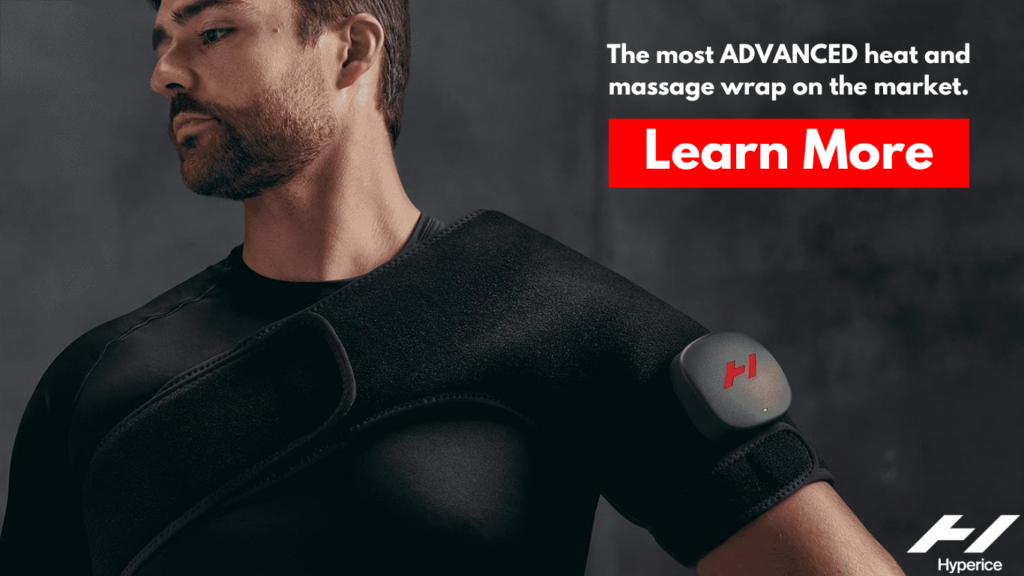
Rehabilitation phase:
- Physical Therapy – In this part you will work on regaining strength, mobility, and function in your shoulders. Injury is often an opportunity to improve and become even stronger and more mobile than before.
- Stretching and Flexibility Exercises – Mobility and flexibility are key to increasing the range of motion. Don’t hold passive stretches too long because mobility is more important than flexibility.
Preventive Measures
The best injury prevention is to be fit (strength training of the whole body plus cardiovascular fitness) and have a high-quality rucking backpack (or weighted vest), which should be at the top of your rucking gear list.
If you still notice that the pain is present after ruck marching, then you should probably consider what the ideal rucking weight is for you and maybe add shoulder strap, sternum strap, and hip belt. We often overestimate our capabilities and put too much ruck plate in our backpacks. Extra weight leads to poor posture and stride mechanisms, translating into various problems, including knee pain, shin splint, etc.
Psychological Strategies
The mental block lingers much longer than the pain, and it’s like that with any injury. Just think of NFL or NBA players after an ACL tear; they are afraid to cut or dunk even though they are physically back at 100%.
It’s the same with the shoulder, as we see in tennis players who, after shoulder injuries, reduce the speed of their serve.
So, to avoid such setbacks, try to maintain a positive mindset throughout your recovery. The best advice I got from my mentors was to focus on progress and growth rather than setbacks.
Setting achievable goals and tracking your sports performance along the way is undoubtedly the best way to focus on the positive.
Don’t hesitate to reach out to fellow ruckers and seek support from online communities. Shoulder pain is common in the rucking world, and it will certainly help you to hear that many people had a similar experience and are now rucking successfully again.
Conclusion
The bottom line is that shoulder pain doesn’t have to be a roadblock on your rucking journey. If it appears, don’t think it’s a catastrophe. Yes, it can be tricky and sometimes takes a long time to resolve totally, but there are ways to get back to your previous fitness/rucking level.
I hope I helped you understand the causes of shoulder pain, how to implement effective treatment and preventive strategies. And also, when it’s time to seek professional help.
Stay resilient and dedicated. Happy rucking!
Frequently Asked Questions
Is it possible to ruck with a pre-existing shoulder injury?
It’s possible to ruck with a pre-existing shoulder injury, but listen to your body and avoid movements that exacerbate pain or discomfort. Depending on the severity of your injury, modifying your rucking routine may be enough, and sometimes, you have to temporarily switch to low-impact activities to allow your shoulder to heal properly.
Are there any long-term consequences of ignoring shoulder pain while rucking?
Ignoring shoulder pain while rucking can have significant long-term consequences, including chronic pain, reduced mobility, and impaired function. The shoulder is a very complex joint, and if the injury worsens, it may even be necessary to get surgery on the rotator cuff or some other part. It’s better to be safe than sorry and do everything to fix it on time.
References
- KÖhler HC, Tischer T, Hacke C, Gutcke A, Schulze C. Outcome of Surgical and Conservative Treatment of Patients with Shoulder Impingement Syndrome – a Prospective Comparative Clinical Study. Acta Chir Orthop Traumatol Cech. 2020;87(5):340-345. English. PMID: 33146602.
- Nazari G, MacDermid JC, Bryant D, Athwal GS. The effectiveness of surgical vs conservative interventions on pain and function in patients with shoulder impingement syndrome. A systematic review and meta-analysis. PLoS One. 2019 May 29;14(5):e0216961. doi: 10.1371/journal.pone.0216961. PMID: 31141546; PMCID: PMC6541263.
- Lucas J, van Doorn P, Hegedus E, Lewis J, van der Windt D. A systematic review of the global prevalence and incidence of shoulder pain. BMC Musculoskelet Disord. 2022 Dec 8;23(1):1073. doi: 10.1186/s12891-022-05973-8. PMID: 36476476; PMCID: PMC9730650.
- Peterson G, Pihlström N. Factors associated with neck and shoulder pain: a cross-sectional study among 16,000 adults in five county councils in Sweden. BMC Musculoskelet Disord. 2021 Oct 12;22(1):872. doi: 10.1186/s12891-021-04753-0. PMID: 34641836; PMCID: PMC8513299.
- Hodgetts CJ, Leboeuf-Yde C, Beynon A, Walker BF. Shoulder pain prevalence by age and within occupational groups: a systematic review. Arch Physiother. 2021 Nov 4;11(1):24. doi: 10.1186/s40945-021-00119-w. Erratum in: Arch Physiother. 2022 Jan 10;12(1):3. PMID: 34736540; PMCID: PMC8567712.
